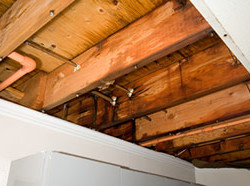How Fast Does Mold Grow? Is This Old Mold?
Have you recently discovered a mold colony in your building or home? Determining the cause is an important factor in successful treatment. Failing to address the original situation will likely result in continued recurrences. Here are some of the mold identification clues experts use to determine the age of an infestation, which can indicate probable cause.
How quickly can mold grow?
Mycologists, who are biologists specializing in the study of fungi, have found that mold growth can occur over a period as short as two to three days. However, simply examining the mold itself gives no indication of the time frame. Observations of the surrounding area and surfaces provide more reliable evidence for an estimate.
Recent or single-event growth
Water is the principal ingredient required for mold growth, so any incident that creates dampness in a building or home results in prime conditions for an colony to develop. If mold turns up after a burst pipe or a roof leak, it’s generally assumed that it’s a one-time localized occurrence.
Long-standing or multi-event growth
Buildings that are more than 20 years old often have a history of leaks, flooding and other events that create an overall environment conducive to the growth of mold. They also tend to contain drywall, fiberglass insulation and other “mold-friendly” materials that make it easy for mold to spread from one area to another. Rot on wood, carpeting or other surfaces is another reliable sign of long-standing mold.
Don’t take on the task of mold identification by yourself. Contact us today to schedule a free mold inspection by our skilled professional technicians.

